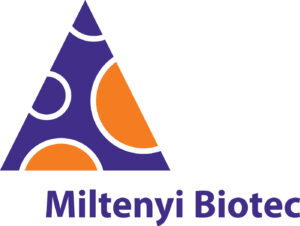Sponsored content brought to you by
The power of spatial biology utilizing a variety of “omics” is undeniable. Scientists across the globe have demonstrated its utility in tissue mapping, deep phenotyping, and biomarker discovery to gain a deeper understanding of human health and disease. There are certainly advantages to applying multiple spatial omics to pose relevant research questions. While spatial transcriptomics gives us a view of what appears to be happening, spatial proteomics provides additional context on what makes it happen by profiling protein expression to elucidate where cells are located in the tissue, their biomarker co-expression patterns, and how they organize and interact to influence the tissue microenvironment.
Solid tumor cancers are particularly challenging as they can contain many different cell types, both malignant and nonmalignant, in a dynamic local environment. To better understand the role of these cells in cancer biology, a thorough characterization of the spatial context of the heterogeneous tumor microenvironment (TME) is needed. This requires a vast number of markers to identify the location and relationships between immune infiltrates, tumor-specific markers, and structural components of the tumor.
The MACSima™ Platform was developed to address the challenges of navigating complex tissue environments such as the TME. This system is unique in its ability to automatically stain and image a virtually unlimited number of targets using MACSima Imaging Cyclic Staining (MICS) technology. This nondestructive approach enables the visualization of hundreds of markers while leaving the tissue intact for additional staining or downstream applications.
Antibodies and panels
While traditional immunohistochemistry or immunofluorescence relies on just a few antibodies, high-plexed immunofluorescence requires up to dozens of antibodies that can stain a particular tissue. Before an experiment even begins, one must optimize the individual antibodies and panel. Miltenyi Biotec provides a broad array of hundreds of immunologically relevant antibodies that are qualified for formalin-fixed, paraffin-embedded (FFPE) and frozen tissues on the MACSima System. These reagents are directly conjugated with common fluorochromes and are commercially available as individual antibodies or preconfigured plates. Panel optimization may take mere days or weeks, empowering scientists to begin experiments sooner. The MACSima Platform is an open system and can readily be used with antibodies from other sources.
The REAscreen™ Immuno-oncology Kit includes a convenient and standardized staining panel dried down in a 96-well plate. With 61 essential markers, this predefined panel for human FFPE samples enables the identification of 12 potential immune cell subsets within the TME as well as the activation or checkpoint status of those populations. These subsets consist of immune cells and tumor stroma—including blood and lymphatic vessels—and malignant epithelial cell populations, along with their proliferative or apoptotic state. To complement this proteomic panel, Miltenyi Biotec recently developed the 24-plex RNAsky™ IO Explore Panel to enable true spatial multiomics with the detection of both protein and RNA on the same tissue slice. This investigative panel consists of well-characterized immuno-oncology markers that are broadly applicable across various cancers.
Multiplex data analysis
Hyperplexed imaging experiments generate large amounts of data that contain a treasure trove of complex information. MACS® iQ View Software is an advanced informatics tool specifically designed for spatial analysis. This user-accessible data analysis package enables interpretation of large, multidimensional data sets and allows deep dives into the spatial relationships among multiple markers. It provides effective cell segmentation, flexible gating, and advanced plotting tools that help to reveal insights held within large and complex data sets.
In conclusion, many of the challenges in spatial biology can be addressed using tools that increase the availability of markers that can be analyzed, reduce panel optimization time, and enable simple, yet sophisticated, data analysis.
 Visit the MACSima Spatial Biology Homepage to learn more.
Visit the MACSima Spatial Biology Homepage to learn more.




